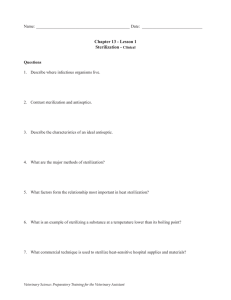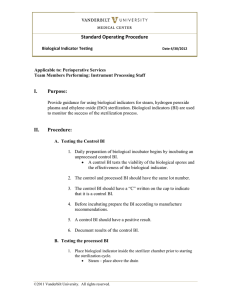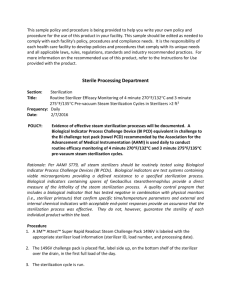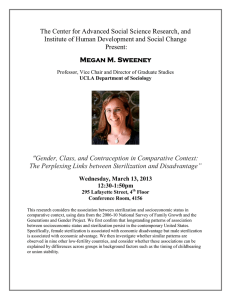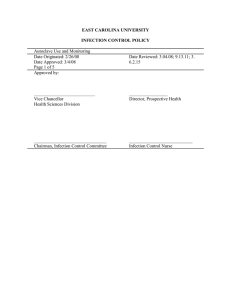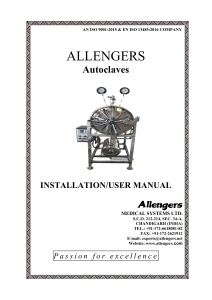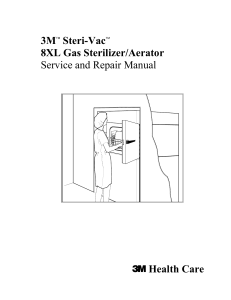SP3-7 Positive Culture and Recall of Hospital Items
advertisement
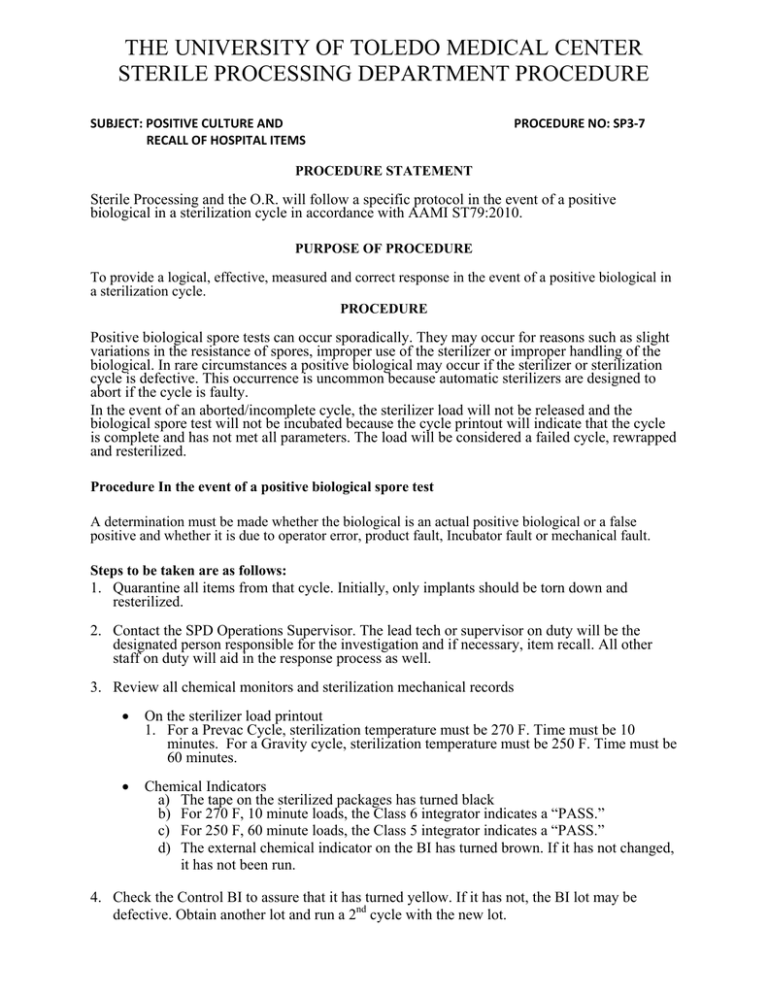
THE UNIVERSITY OF TOLEDO MEDICAL CENTER STERILE PROCESSING DEPARTMENT PROCEDURE SUBJECT: POSITIVE CULTURE AND RECALL OF HOSPITAL ITEMS PROCEDURE NO: SP3‐7 PROCEDURE STATEMENT Sterile Processing and the O.R. will follow a specific protocol in the event of a positive biological in a sterilization cycle in accordance with AAMI ST79:2010. PURPOSE OF PROCEDURE To provide a logical, effective, measured and correct response in the event of a positive biological in a sterilization cycle. PROCEDURE Positive biological spore tests can occur sporadically. They may occur for reasons such as slight variations in the resistance of spores, improper use of the sterilizer or improper handling of the biological. In rare circumstances a positive biological may occur if the sterilizer or sterilization cycle is defective. This occurrence is uncommon because automatic sterilizers are designed to abort if the cycle is faulty. In the event of an aborted/incomplete cycle, the sterilizer load will not be released and the biological spore test will not be incubated because the cycle printout will indicate that the cycle is complete and has not met all parameters. The load will be considered a failed cycle, rewrapped and resterilized. Procedure In the event of a positive biological spore test A determination must be made whether the biological is an actual positive biological or a false positive and whether it is due to operator error, product fault, Incubator fault or mechanical fault. Steps to be taken are as follows: 1. Quarantine all items from that cycle. Initially, only implants should be torn down and resterilized. 2. Contact the SPD Operations Supervisor. The lead tech or supervisor on duty will be the designated person responsible for the investigation and if necessary, item recall. All other staff on duty will aid in the response process as well. 3. Review all chemical monitors and sterilization mechanical records On the sterilizer load printout 1. For a Prevac Cycle, sterilization temperature must be 270 F. Time must be 10 minutes. For a Gravity cycle, sterilization temperature must be 250 F. Time must be 60 minutes. Chemical Indicators a) The tape on the sterilized packages has turned black b) For 270 F, 10 minute loads, the Class 6 integrator indicates a “PASS.” c) For 250 F, 60 minute loads, the Class 5 integrator indicates a “PASS.” d) The external chemical indicator on the BI has turned brown. If it has not changed, it has not been run. 4. Check the Control BI to assure that it has turned yellow. If it has not, the BI lot may be defective. Obtain another lot and run a 2nd cycle with the new lot. 5. Check the incubator to assure that it is operating properly. If it is not, run a 2nd BI and incubate in another incubator. 6. Check with the Plant to determine if there were any changes to steam service. If there has been a disruption or chemical change, the load Follow-up A single positive BI does not indicate a sterilizer malfunction if the mechanical and chemical indicators are acceptable and appear to be functioning properly. If all chemical indicators pass and sterilization records show that all parameters have been met, two additional BI’s and two Controls should be run (from a new lot number). They will be placed in separate incubators. If one or both BI’s pass, it can be assumed that the fault lies with the BI or the incubator. This will be reported to the BI manufacturer. The entire load must still be rewrapped and resterilized and the sterilizer will still be taken out of service for further investigation as an added precaution. In the event that both follow-up BI’s turn positive, it must be assumed that the sterilizer is faulty, taken out of service and repaired. All items from all cycles up to the last negative BI should be recalled, rewrapped and resterilized. The Operations supervisor will contact Infection Control at ext.: 5006 or paged at 419-218-3744 and provided with all details, including which trays if any were not able to be recalled. Infection control will notify all physicians as necessary. If patient-care items were used before retrieval, the infection control professional should assess the risk of infection in collaboration with central processing, surgical services, and risk management staff. The factors that should be considered include the chemical indicator result (e.g., nonreactive chemical indicator may indicate temperature not achieved); the results of other biological indicators that followed the positive biological indicator (e.g., positive on Tuesday, negative on Wednesday); the parameters of the sterilizer associated with the positive biological indicator (e.g., reduced time at correct temperature); the time-temperature chart (or printout); and the microbial load associated with decontaminated surgical instruments (e.g., 85% of decontaminated surgical instruments have less than 100 CFU). The margin of safety in steam sterilization is sufficiently large that there is minimal infection risk associated with items in a load that show spore growth, especially if the item was properly cleaned and the temperature was achieved (e.g., as shown by acceptable chemical indicator or temperature chart). There are no published studies that document disease transmission via a non-retrieved surgical instrument following a sterilization cycle with a positive biological indicator. The positive BI’s must be saved and sent to the microbiology lab for culturing to either verify or determine spore growth. The load recall should not be delayed for this testing. Once the sterilizer has been repaired, 3 consecutive BI’s must be run followed by 3 consecutive Bowie-Dick tests. All must pass before placing the sterilizer back into service. Reviewed/Revised 1996 2002 2005 2007 2008 2010 1/2014
